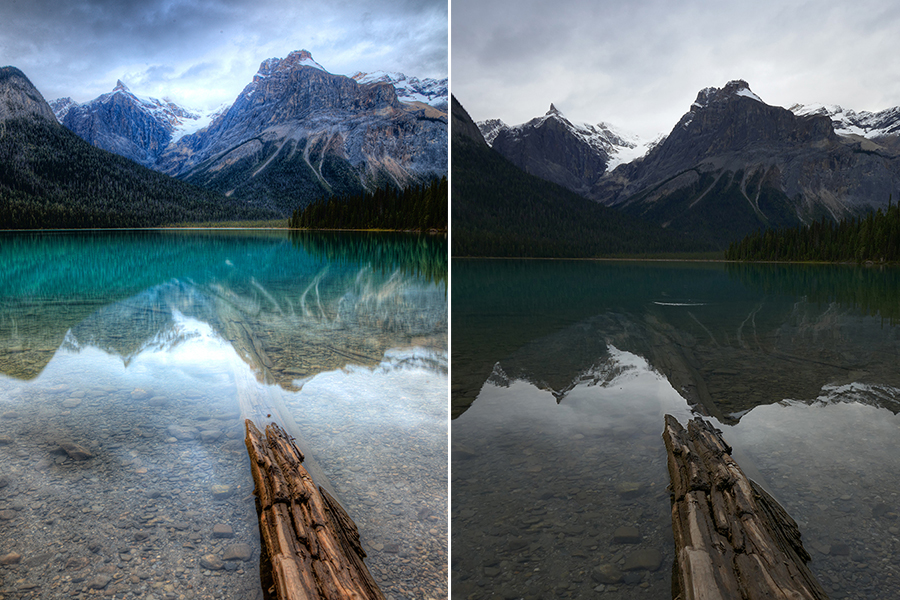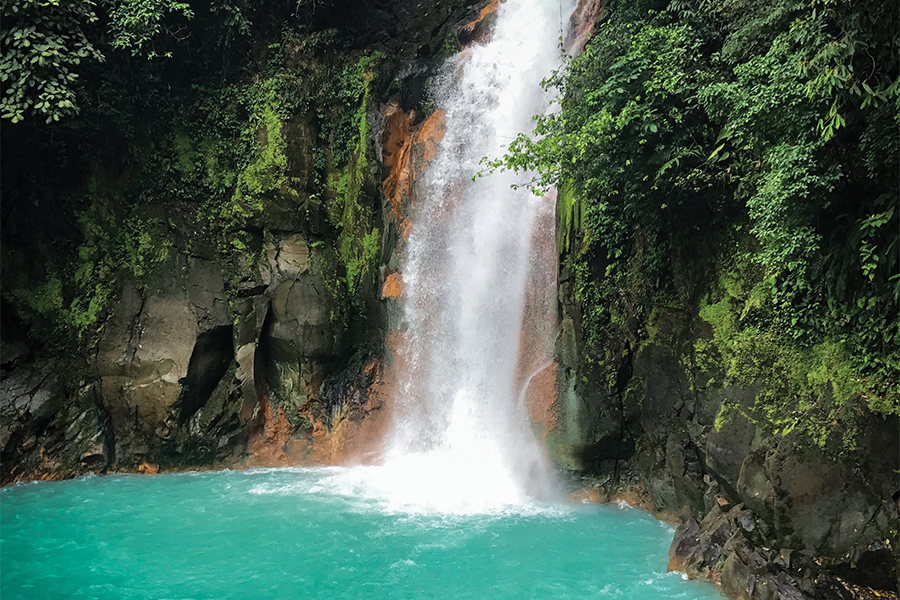Photos on the Fly: How to Take Great Travel Photos

Whether you have a smartphone, point-and-shoot or a DSLR (digital single-lens reflex) camera, taking high quality shareable photos is becoming more and more tangible for the beginning photographer, especially when traveling. We’ve compiled a few tips and tricks and also reached out to some local photography experts to weigh in on how you can get the best photos possible on your upcoming trip.
Get to know your camera
If you only follow one rule from this list, this should be it. You may think you know all your camera has to offer, but whether you have a smartphone, point-and-shoot or DSLR, it’s important to familiarize yourself with everything from the lenses, modes, flash, etc.
If you’re planning to use more than your smartphone, local camera stores can be a great resource to make sure you have the right equipment, and that you know how to use it. The more prepared you are to use your equipment, the less time you spend trying to figure it out at an inopportune moment. Local photographer Wayne Moran said, “The better you know how to use your camera, the better your results will be.”
Should you use a smartphone or DSLR?
Stressed about having the right camera? All of our experts reiterated the phrase from famed photographer and artist, Chase Jarvis:
“The best camera is the one that’s with you.”
Benefits of using your smartphone camera
So having the biggest and most expensive camera with all of the bells and whistles doesn’t necessarily mean you will get the best photos, especially if you don’t know how to use the equipment properly. Lugging around a bigger camera with all of the expensive attachments can actually be cumbersome, especially when traveling. Technology is always advancing and many smartphones and professional quality point-and-shoot cameras on the market today have a lot of the same great features and capabilities as a DSLR camera.
Advantages of a DSLR camera
So why would anyone opt for a bulky DSLR if smartphones have so many great features?
DSLR cameras have the advantage when it comes to the range of lenses and shooting in low light spaces, including dimly lit indoor spaces and outdoor nightscapes. They also are the front runner when it comes to printing or enlarging photos. Photographer John Gregor stated, “Phone photos look great as long as you view them on the phone. Where they don’t look so great is when you try to take them off the phone and in particular when you enlarge them as a print—this is where the limitations of the optic quality of the phone’s lens and small sensor size show their limitations.”
Don’t forget the accessories!
Just as important as the camera itself are all the accessories that allow you to take those great shots. Nothing is worse than running out of power, so don’t forget the extra batteries and power cords. Equally distressing is running out of memory or storage on your camera or phone, so make sure to bring extra memory cards and transfer your photos on a nightly basis (and delete the old photos) so that you can start fresh the next day.
Lastly, a tip confirmed by all of our pros, if you’re using a DSLR camera, don’t forget a sturdy tripod! There are smaller, travel-sized tripods available if you’re dreading the idea of lugging it around with you, but all of our photographers agree it’s a must. Gregor stated, “It is worth the investment and use. The single biggest reason that images are unacceptable is because of camera movement during exposure, especially when photographing sunrises and sunsets or other low light scenes.”
Your Travel Photography Checklist
- Extra batteries
- Power cord and adapters
- Extra memory cards
- Sturdy tripod
Remember lighting is key
Lighting is one of the main key elements to be aware of when taking your photos. Depending on the location and subject, some photographers refuse to shoot in the middle of the day or at peak sun times.
It’s important to be aware of the light and use it to your advantage. Natural light can really make a photo shine or suffer, so being aware of where your light is coming from is incredibly important. Several of our pros recommended sunrise and sunset for shooting your photos due to the preferred lighting, and also to avoid the crowds.
Lighting is important when photographing people as well. Take note of the source of light, the level of brightness and the angle, and use it to your advantage, or use your accessories to improve upon it. Photographer Don Tredinnick stated, “If the background is really bright, use the flash on your camera or phone to ‘brighten up’ the people. If you don’t have a flash, see if your camera will allow you to modify the exposure. This feature is even available on smart phones.”
Don't forget to be in the moment
These days, especially on trips, a lot of people experience their destination through the lens of a camera instead of fully experiencing or seeing all of the possibilities for their photos. If your trip allows you to do so, try to take in the scenery of a location ahead of time without taking any photos at first, and then go back with your camera.
To fully take in your destination, our pro Gregor also advises getting to know the locals for the best ideas and advice. Gregor stated, “They know where the best places are to take pictures. Many times these tips have resulted in some of my favorite photographs.”
Do you use Facebook, Snapchat or Instagram? While on a trip, many people are always on their phones and like to be the most current at all times of the day. However, try not to be consumed by keeping your followers in the loop with every location you visit at every moment. Take time at the end of the day to choose your favorite photos and keep your account active without taking away from the importance of your trip.
But also, have a plan
While having a photography plan may seem counterintuitive to being in the moment and enjoying your trip, having a rough idea of your must-shoot photos ahead of time can save you the agony and regret later of having missed out on a photo opportunity, especially in a place you may never have the chance to visit again. On the same note, don’t let your plan be all consuming; being flexible and straying from the plan can sometimes lead to the best photos. Tredinnick stated, “Be flexible. Just because you have a plan, that should not be the limiting factor. If you see something interesting, by all means take the shot.”
Take a travel photography class
If you really want to take your photos to the next level, try taking a local photography class. Community education classes often have beginner photography classes available, and local photographers or photography studios may offer travel-specific photography courses to really fine tune your skills before your trip. Gregor stated, “These workshops are designed for the photo enthusiast who wants to hone their skills and improve their photography. It isn’t necessary to have lots of expensive equipment to make really great photographs; rather, what makes really great photographs is an impassioned photographer who understands the basics and uses their gear in interesting and
creative ways.”
Try different angles and composition techniques
The Rule of Thirds
In a flashback to high school photography class, the rule of thirds, a classic photography technique, applies just as much today as always. The rule is intended to improve the balance and composition of your photos, understanding that always placing your main subject in the center of the photo is not ideal.
Gregor stated, “Compose the subject using the rule of thirds, which states that the subjects of interest (or horizon line) should not be in the middle but rather a third of the way up from the bottom of the frame, or a third of the way in from the left or right side of the frame.”
Adjust your position or vantage point
When you first see a historic building or a waterfall, your first instinct may be to grab your camera and shoot it from where you’re standing. If you try moving around a bit and capture the focal point from different angles and viewpoints, you may be surprised what a different perspective can bring. The leading lines of a road, trail or fence will also give dimension and depth to an otherwise flat photo.
Our local photography experts
John Gregor of Coldsnap Photography started his studio 22 years ago. He is a professional photographer and photographic educator specializing in landscape and travel photography. coldsnap.com
Wayne Moran of Wayne Moran Photography is a Minnesota-based photographer and artist. He focuses his skills and energies on landscapes, cityscapes, architecture, nature and portrait photography. lettherebelightfineart.com
Don Tredinnick of Frozen Hiker Photography started his company in late 2012 with the goal of providing classes and workshops for people wanting to improve their photographic skills. He enjoys shooting nature, wildlife, old dilapidated buildings and equipment. frozenhiker.com





